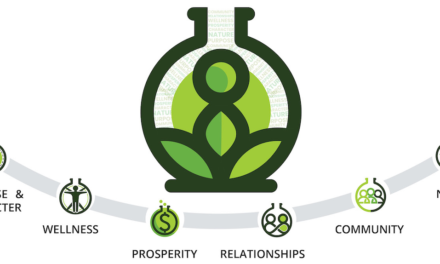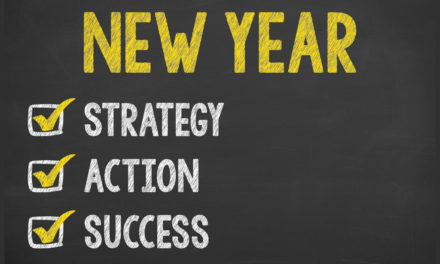Rajshree Agarwal: Create Your Own Personal Advisory Board
Rajshree Agarwal: Create your own Personal Advisory Board

After finishing their education, young professionals often find that they miss the assistance provided by their academic mentors. To fill in this gap, many are creating their own personal advisory boards. For mid-to-late career professionals, a personal advisory board is also recommended, but its composition should be different.
Why This Matters Honest feedback from trusted colleagues can be of considerable help as professionals cope with the challenges of a rapidly changing economy.
The Takeaway Creating a personal advisory board is relatively straightforward, as long as you follow a few simple steps.
In Depth Eleven years ago, Rajshree Agarwal, who today serves as Director of the Ed Snider Center, stumbled upon an idea. Recently promoted to endowed professor, she was working on an academic article with two co-authors. As the trio of business school professors, who were all at roughly the same stage of their careers, addressed the research topic of strategy to optimize organizational goals, they often digressed, also discussing how they might achieve their own personal goals. Agarwal found this side-conversation particularly stimulating, so she had no intention of abandoning it. “After we submitted the article, I suggested we formalize this arrangement whereby we would continue to help each other develop strategies for managing our careers,” she says.
Thus was born Agarwal’s own personal advisory board, which has provided invaluable support both to her and her two colleagues ever since. Over the past few years, personal advisory boards have begun to emerge as a fixture for many business professionals across the nation working in a variety of sectors from accounting to tech. As the authors of a 2015 review article in the MIT Sloan Management Review stress, these boards now fill an urgent need, given that “changes in the career landscape…including global mobility, an increasingly diverse workforce, shortened job tenures and the extensive use of technology, present managers with unprecedented complexity and uncertainty.”
Once people finish their schooling, Agarwal notes, there is often a big hole in their lives. “Academic mentors can help you navigate the landscape in college or graduate school, but once you are out on your own, you really need a new set of advisors,” she says. She adds that personal advisory boards have to fit your needs, based on your particular career stage, so different strategies are recommended for early and mid-to-late career professionals.
Who Should Be on Your Personal Advisory Board?
Agarwal emphasizes that you should start by considering a wide array of options, drawing from your network of colleagues and friends. When narrowing the list to your final choices, several criteria are important. “Trust is extremely critical,” she says, noting you have to be confident the other person will have your best interests at heart. “You can’t have someone who needles you or brings you down. On the other hand, yes-persons don’t fit either. What you need are people who can put themselves in your shoes and provide honest feedback. They may bring up painful truths, which is all the more reason you need to trust they can advise you constructively.”
Your personal advisory board also needs to be familiar with the context you face—your business landscape. “In the case of my mid-career board, what connected us was that we all wrote about strategic innovation and entrepreneurship,” she says
For an early-career board, she recommends finding four people—two peers and two mentors, with one from each group being internal and the other external to your organization. So, say the first job you land is in information technology (IT) at Facebook. You might find one peer from Facebook, one peer who works in IT elsewhere, one mentor at Facebook, and one mentor who specializes in IT elsewhere—say, your former academic advisor. Peers will benefit from a quid pro quo. Since mentors will not have such an expectation, look for those with benevolence who seek to invest in you. “I have served on the boards of several former students,” Agarwal says. “My assumption is that the individual will eventually pay it forward to someone else.”
For mid-to-late-career boards, Agarwal says that while no one size fits all, you should choose no more than three other people, all of whom are peers. “In this case, you are working entirely on the principle of quid pro quo.”
What Should Your Board Do?
“Personal advisory boards do not have any decision-making power; their role is to provide insights and advice” says Agarwal. To leverage the power of each advisory session, Agarwal says focus is key. “Each session should address the concerns of a single member, who drives the agenda for the meeting by identifying a strategic issue that they face. The task of the other members is to listen actively, brain-storm through options and criteria to weigh these options, and facilitate decision making through these insights.”
In early-career boards, Agarwal recommends regular but separate one-on-one sessions with each member of your board. “With peers, there is a buddy-system,” Agarwal elaborates. “You switch roles from one meeting to the next; so you would either be the one addressing problems, or the one providing advice. With your mentors, you would actively seek advice, and apprise them later on your implemented strategy and its outcomes. This provides the mentors the rewards from their time investment in you.”
In contrast, mid-to-late-career boards work differently, as the meetings involve all the members. In Agarwal’s case, she and her two colleagues have a phone meeting once a month, so each person gets a turn once every three months. “We have a commitment to help one another; we are also accountable to each other,” says Agarwal. A major reason why group meetings are recommended is that, given the similarities of career stage and business landscape, an issue identified by one person is likely to be relevant to the others.
Agarwal also suggests some other tips to maximize your personal advisory board’s effectiveness. One is consistency—be sure to schedule meetings well in advance, and guard these meeting times against encroachments from other commitments. She stresses, “Don’t let the immediate get in the way of the important. The second is follow-up and follow-through—the right and the responsibility of the decision is yours, but be sure to report back to your advisory board. This creates the virtuous spiral for continued engagement and added value.”
Dig Deeper:
https://www.entrepreneur.com/article/238644
https://www.livecareer.com/career/advice/jobs/personal-advisory-board
http://blog.johnspence.com/2015/07/build-personal-advisory-board/
https://sloanreview.mit.edu/article/assembling-your-personal-board-of-advisors/




